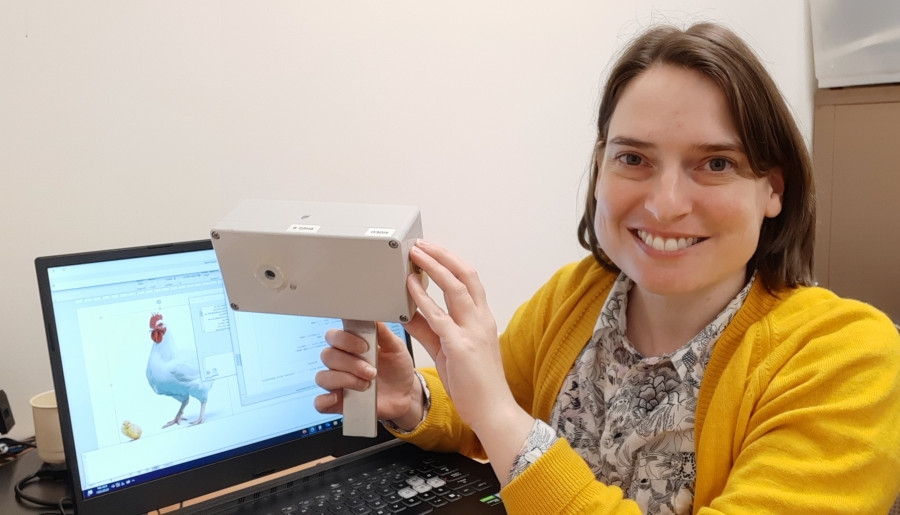AgriFutures Australia and the University of Southern Queensland are seeking technology partners to commercialise novel video analysis software to better detect growth and welfare indicators of poultry flocks and enhance on-farm decision making.
Poultry farmers spend a great deal of time checking the health and welfare of their chickens. This can mean walking through the flock up to three times a day monitoring for signs of poor health.
Now a Queensland research team has developed a more accurate and efficient system than visual checks, in an Australian first that’s almost as simple as mounting a camera on the poultry shed wall.
Funded by the University of Southern Queensland and AgriFutures Australia’s Chicken Meat Program, mechatronic engineers Dr Cheryl McCarthy and Dr Derek Long have linked continual on-board image analysis, similar to face recognition, with a low-cost camera to provide regular updates on flock movement throughout the day.
The system is an Australian first, and after two years of testing, USQ and AgriFutures Australia are seeking interest from commercial partners to complete an extended range of trials in large commercial sheds and manufacture a shelf-ready product.
“The cameras observe the daily behavioural patterns of the chickens, picking up changes that could be indicative of underlying health issues,” explained Dr McCarthy.
“The algorithms in the camera technology recognise subtle changes in patterns of behaviour and the information is provided to the farmer throughout the day as a brief report.”
Existing camera techniques used for monitoring flocks analyse the number of pixels in the image, rather than analysing individual animals, making it difficult to correlate accurately with bird activity.
The software can recognise and differentiate chickens from the background of the shed or enclosure and converts the pixels to physical distances, which means the technology can also be used for predicting physical sizes and bird weights.
“We’d anticipate a farmer would have a low-cost colour camera in their shed recording video clips and the software algorithms will analyse the images and turn them into data reflecting bird behaviour patterns and provide that to the farmer.”
Each camera can ‘see’ around 1,000 chickens per day and its findings can then be extrapolated across a flock of 40,000 to 50,000.
The technology is a ‘game changer’ for improving welfare, productivity and forecasting for the supply chain, said former AgriFutures Chicken Meat Advisory Panel Chair and grower, Guy Hebblewhite.
“There is currently no system evaluated in Australia for chicken shed monitoring. Practically on farm, this technology will allow growers to monitor flocks around the clock,” he said.
“Growers will also be able to estimate the weight of their chickens throughout the shed and identify if they are on target or not. This information could then be provided to processors to assist in forecasting.”
Dr McCarthy has already considered the type of commercial partners to take the technology to market, and said a big attraction is its potential for use in industries other than poultry.
“A technology provider working in poultry or agriculture with sensing equipment or cameras in their product range could port the developed video analysis software onto their preferred camera hardware and develop a graphical user interface to present video analysis results to the farmer,” she said.










